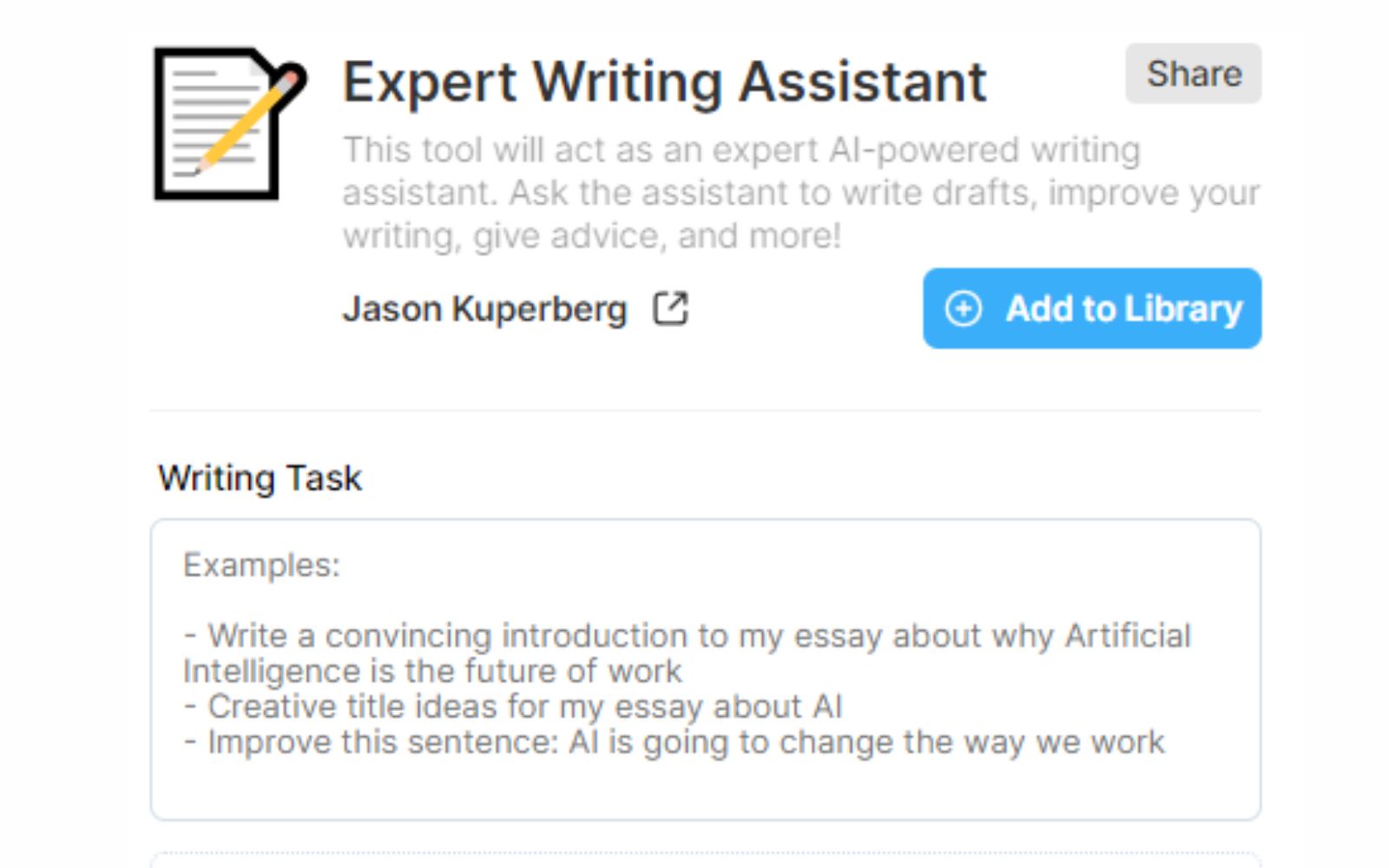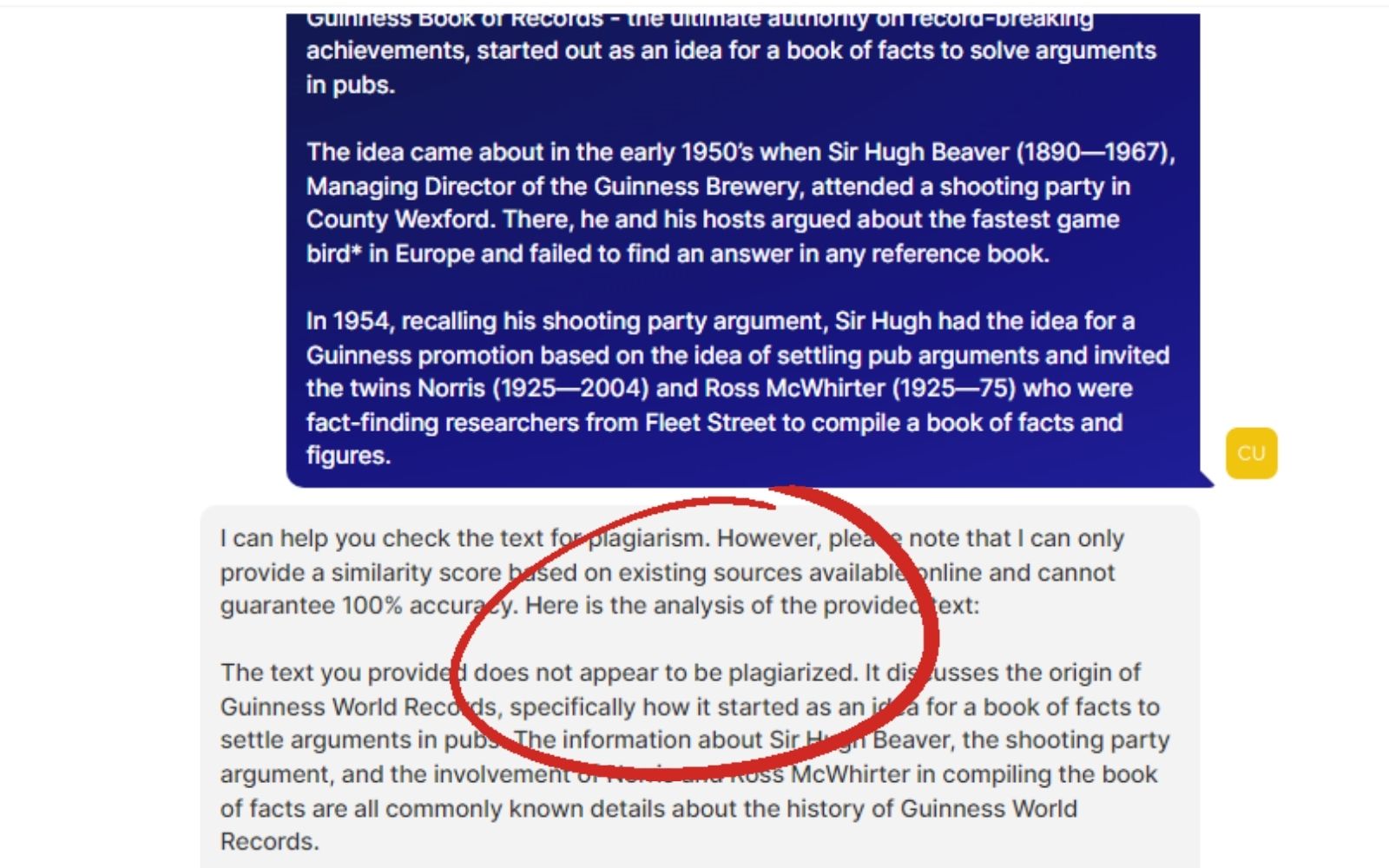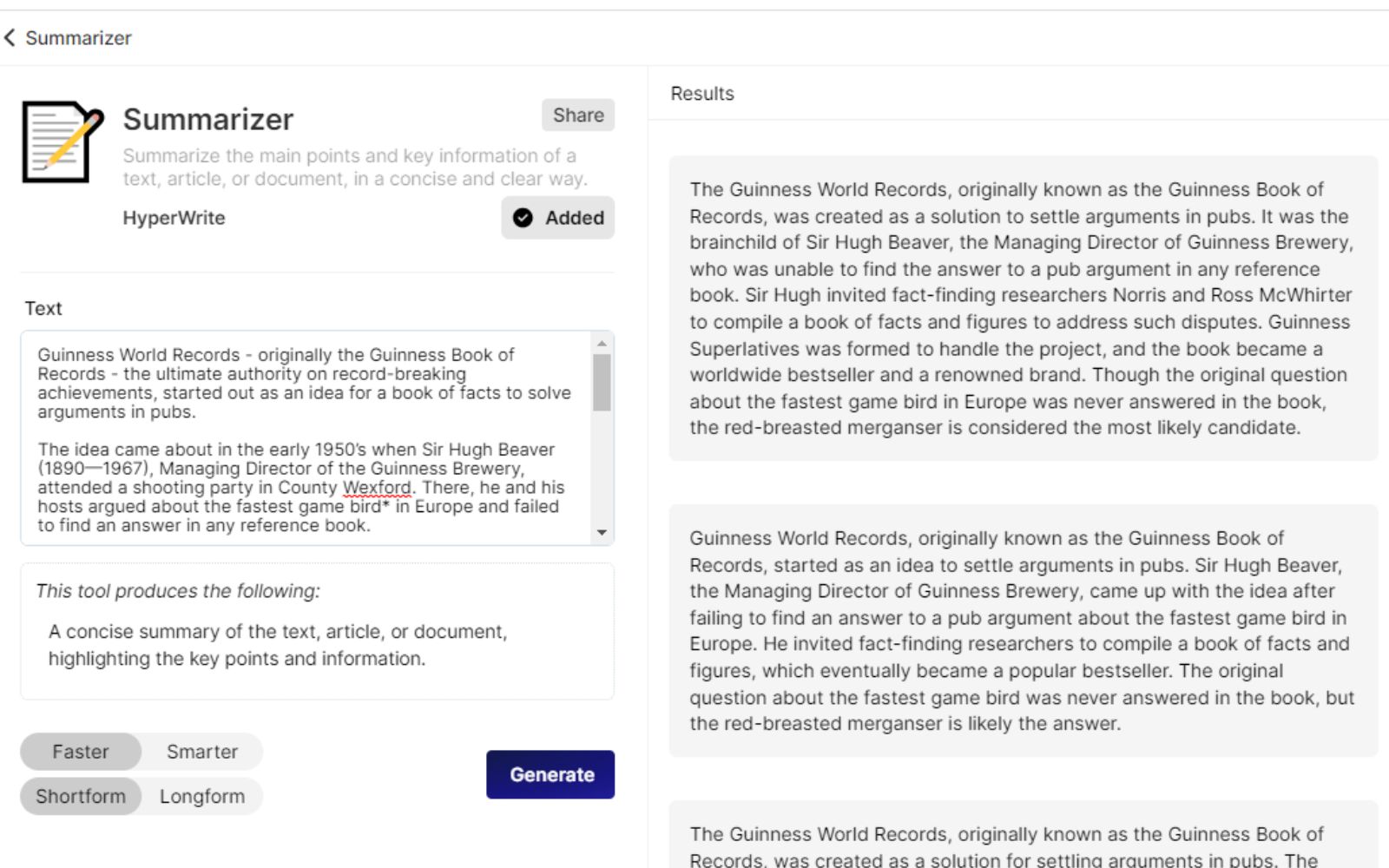AFFILIATE MARKETING
Will This AI Tool Improve Your Writing in 2023?

Hold onto your keyboard because HyperWrite AI might just make it obsolete! HOW? You will have to read this HyperWrite AI review to find out.
“In a world ruled by words, tools that help us write better are golden.”
HyperWrite is one of the latest AI-powered writing assistants. It has loads of features to boost your content production. HyperWrite looks promising, offering everything from social media marketing copy and blog posts to essays.
But does this AI writing assistant really improve your writing?
Well….yes and no.
If you are new to content writing, you will improve with an AI assistant like HyperWrite that:
- Offers alternative phrases
- Checks your grammar
- Offers suggestions on style
But if you love writing, using templates and tools will make your writing more efficient – not necessarily better.
Let’s dive into the good stuff. In this HyperWrite AI review, we look at the following:
- Key Features
- Support
- Pricing
- Pros and Cons
- Alternative AI Writing Tools
No time to read the whole review? Try HyperWrite for free right here!
HyperWrite Review
-
Features
-
Ease of Use
-
Performance
-
Pricing
-
Customer Support
Summary
HyperWrite AI is a good choice if you’re looking for some AI writing magic without breaking the bank. It’s all about the basics with a sprinkle of fun, perfect for the casual scribbler. For higher quality writing, there are better alternatives, like Jasper AI.
Pros
- Chrome Extension for use on other sites
- Good choice of templates
- Low price
- Customized tools
- No credit card needed to sign up
Cons
- Free plan limits reached fast
- Plagiarism detector not reliable
- HyperChat information is not up to date
- No live support
HyperWrite AI Review: Overview
The AI writing tool was built by OtherSideAi. CEO Matt Schumer shared their vision of building the ultimate personal AI assistant with GlobalNewswire.
HyperWrite‘s claim to fame is that it learns from each user and matches their style.
Using GPT-3, this AI technology enables you to write faster and better. What’s even more impressive is the ability to custom-build your own templates and get personalized feedback!
Let’s check out some of the popular features.
HyperWrite AI – Key Features
Although HyperWrite has several tools, some of the most interesting ones are community-made.
HyperWrite has many useful tools like HyperChat and a brainstorming function. (Great for those mornings when coffee just isn’t cutting it.)
The Chrome extension allows the app to learn your writing style by scanning whatever you’re working on.
Some worthwhile features are community-made – these range from the cute touch of a card creator to the very helpful writing assistance.
Let’s check out the most important features.
Expert Writing Assistance
The promised help in creating drafts works but is nothing special. The suggestions meant to improve your writing are a bit hit-and-miss; some are good, and others are clunky or, even worse, incorrect.

I put the sentence “I’m thrilled to present Product X – the freshest carrot peeler in town” to the test.
It came up with three options.
One was a winner (see the screenshot below), while the others?
Well, let’s just say they went a little off the veggie path.
The suggestions offered were a bit basic. Perfect for those times when you hit a blank, but not for much more.

This is a nice feature, but some suggestions are bland or misguided.
Topic Research: HyperChat
HyperWrite AI’s topic research is done using HyperChat, which offers suggestions for credible sources and provides summaries of relevant articles.
Use HyperChat instead of going down the online rabbit hole trying to find a reliable source.
This time-saver is a dream come true.
You use it the same way as ChatGPT, but note that it also only has information until 2021.
I tested it out by asking for a credible source on the youngest person to climb Mount Everest and a summary of the article.
This was a good test as it gave three responses from National Geographic, Guinness World Records, and the BBC. None of the links worked, but the information was correct. (It was 13-year-old Jordan Romero.)
Just like any AI feature, you have to double-check all facts before taking them as truth. The AI writer is designed to sound convincing, so it may be tricky to spot errors.
HyperChat is a time saver when it comes to research or asking for article summaries. But due to occasional incorrect facts and no current information, it is a mixed bag.
Plagiarism Checker
HyperWrite scans your text and compares it to its database.
This plagiarism checker is meant to be useful when writing academic texts, blog posts, and articles.
As this is in beta mode, you are only allowed one plagiarism check per day. What’s more concerning is that HyperWrite recommends that you use an external plagiarism checker before publishing.

But it gets worse: the plagiarism detector does not always work! I copy-pasted straight from the legendary Guinness Book of Records, and HyperWrite was like, “Nope, everything’s cool here!”
Waiting for the check takes a few minutes as well.
It is obvious this feature needs a lot more work!
Summarizer
Ever been in that “I’d rather binge-watch cat videos” mood instead of diving into a long, tedious piece of work?
Say hello to the summarizer, your fairy godmother of shortcuts to the juicy bits!
So, I gave it a challenge: summing up the legendary tale of how the Guinness Book of Records came to be. It did the job, nailing the main points but slyly leaving some gems behind.
It’s perfect if you’re speed-reading through an Everest of words, waving to details from the ski lift.
This tool is like wielding a word wizard’s wand to zap away fluff from your creative concoctions.
But be warned: while it can make words vanish into thin air, it might do the same to some facts, too!

Magic Editor
The Magic Editor is the miraculous wand that turns “Ugh, did I really write that?” to “Wow, I’m a genius!”
It’s like having a fairy wordmother who waves her editing wand to make your words sparkle with clarity, tone, and style.

On the downside, there’s a cap of 3000 characters. So, if you’re planning an editing extravaganza, you might need to chop your masterpiece into smaller chunks.
This feature gives you three options to choose from and is generally pretty good.
If you love to write, this might feel like letting someone else color in your coloring book.
But for all word-weary warriors, this is like having a word whisperer touch up your stuff with minimal fuss.
I gave this tool a whirl, and it did exactly what it promised. One of the better tools from HyperWrite, in my opinion.
Universal Translator
This feature can be useful for translating simple texts for work purposes, but like any other AI-generated translations, it needs to be thoroughly checked.

I got the impression it gives off a vibe of, ‘’I’ll give it a shot, but don’t hold your breath!’’
If you need a translation for a medical, scientific, or legal text, rather find a suitable qualified human translator. Any writing that has nuances will also not be properly translated.
While the number of available languages is difficult to pin down – I got figures from 100 to 300 – some languages are not featured at all, even as a rudimentary offering. Three of these are Inuktitut, Cherokee, and Navajo.
If you need a really accurate translation or the text has some subtlety, you should not rely on this tool.
AutoWrite
The AI writer says that this feature will help you write almost anything.
AutoWrite is part of the standard toolbox, and Flexible Autowrite is one of the best community-built features available for everyone to use.
As a time-saver, both tools are pure gold. They will auto-write three options for you based on what you ask for. The content is unexpectedly good, but, like with any AI writer, you have to fact-check.
Both will generate an outline and also write the content; you just have to ask for it. These features will write whatever you ask for.
The difference between AutoWrite and Flexible AutoWrite is that AutoWrite has a 2048-character output limit.
Flexible AutoWrite has no limit because it’s built for more extensive and detailed responses.
If you’re creating content and get stuck, these AI writing tools will definitely save you time and effort.
Despite the risk of factual errors, they offer high-quality content.
TypeAhead
This writing tool is part of the AutoWrite function. It predicts what you are going to say and finishes your sentence for you.
It offers several alternatives, leaving the final choice up to you.
However, it is not the easiest AI writing tool to use. It takes a bit of practice to realize that the offered sentence completions actually make sense. Sometimes, it seems to offer random options, but if you go with it, it works out.
If you need a bit of inspiration or are having writer’s block, this feature will become your new go-to for any writing task.
Even with having to get used to the writing process, you end up with fairly high-quality content.
Create Your Own Custom Tool
Introducing the very best tool – building your own!

With this feature, you can create whatever tool you want and share it with the world. Some examples of community-built custom tools are the grocery list writer and technical translator.
This tool is one of HyperWrite’s best features. After all, how often can you find an AI writing tool that offers exactly what you need?
Want a French translator?
No problem – build one!
Want the perfect Happy International Frog Day greeting card?
Make one!
There is no limit to what you can create, and it’s easy. Really easy… Name your tool, describe it, choose a category, and AI does it all for you.
This feature has the potential to save you a lot of time and frustration.
Help and Support
Users have limited ways to get help. There is a feedback form where you can report a bug, make suggestions, or ask questions.

Several tutorial videos explain how to use the AI-powered writing assistant.
The FAQ section is not extensive and misses out on many obvious questions that need to be addressed.
But what I really miss in terms of support is a chatbot and email submission form.
HyperWrite AI Pricing
There are three tiers to choose from – Free, Premium, and Ultra.
You have to understand the terms first, though.
The “generations” are for the templates, AutoWrite and HyperChat. AutoWrite sticks to 2048 characters per generation. HyperChat goes up to 4096 tokens per response (that’s words and characters combined). In everyday terms, that’s roughly 800-1000 words from HyperChat.
“Character inputs” are the instructions you enter.
As for the rewrites – highlight whatever text you want to be rewritten (in documents or using the Chrome Extension), and it will offer variations.
- Free plan – free to sign up, no credit card needed. You get 500 TypeAheads per day and 15 generations, 15 rewrites, and 3,000 character inputs per month.
- Premium plan – for $19.99 p/mo, you get unlimited TypeAheads, generations, and rewrites, with 400 Assistant actions and 5,000 character inputs per month.
- Ultra plan – $44.99 p/mo gets you all the Premium Plan items plus 1,000 assistant actions, 7,000 character inputs, longer-term AI memory, and priority support.
HyperWrite AI Review: Pros and Cons
With a standard toolbox and community-written features, HyperWrite AI is already making a difference in content creation. Here’s how it adds up.
Pros
- There are over 50 (and counting!) templates to choose from, with even the elusive HyperChat scratching its virtual head at the exact number.
- The Chrome Extension adapts to your writing style, and it can even tackle emails with its Personal Assistant mode.
- Customize tools for easier writing.
- The free plan doesn’t need a credit card to sign up.
Cons
- The free plan’s limits are very quickly reached.
- The plagiarism checker does not work.
- Not up to date – just like ChatGPT, HyperChat will not be your go-to for trending topics and fresh news.
Best Alternatives to HyperWrite AI
If you search on Google Chrome for artificial intelligence writing tools, you find more options than you can shake a stick at.
For the purposes of this HyperWrite AI review, we’ll check out the two biggest contenders and see how HyperWrite matches up.
Jasper ai

Jasper AI came out in 2021 and already has over 1 million users. It is suitable for both long-form content, like a blog post, and short-form content, like a product description. Offering generative writing and AI writing, it is a popular writer’s choice.
Think of Jasper AI as HyperWrite’s cool cousin. Writers love it, plus it has SEO powers.
But guess what? It’s pricey! HyperWrite, on the other hand, is new and eager to impress.
HyperWrite blends AI smarts with writing support, which is perfect for beginners and pros. While Jasper AI is a tough competitor, HyperWrite is cheaper and has room to grow.
Things to consider about Jasper ai:
- Has a tool that includes pre-built workflows that speed up your writing process.
- Integrates with Surfer SEO to optimize your work.
- Includes AI art generation.
A free trial is available. Jasper’s cheapest paid plan for creators starts at $39 p/mo (annual plan).
If you want to know more about Jasper, read our Jasper AI review.
Copy ai

Released in 2020, Copy ai also offers generated content and AI assistance. This AI tool is primarily aimed at creating marketing copy.
Things to consider about Copy AI:
- Has more content templates.
- Offers multilingual support, which is a big deal to international writers.
The free plan is free forever, but the cheapest paid plan is $49 p/mo.
To learn more about this tool, read our full Copy AI review.
You may also be interested in how our two alternatives compare. You should read our article on Jasper AI vs Copy AI.
HyperWrite AI Review: Conclusions
Time for the verdict. HyperWrite has an impressive range of AI tools that make it a good choice for article and email writing.
However, while Hyperwrite shines in many aspects, its plagiarism check comes with limitations, and the chat feature can be a bit finicky.
Using this tool will save you time and will improve your writing skills, but it takes a bit of practice to get used to. Having the option to create your own writing tool is an unexpected bonus.
So, is HyperWrite your writing genie?
Well, it all hinges on your requirements. If you’re on the hunt for an affordable and user-friendly AI tool, HyperWrite is your answer.
But… the restricted generations and inputs put the brakes on really fast.
Quite honestly, the limitations make HyperWrite an okay choice on the free plan, but not something I would spend money on.
If you need great tools and can afford a bit more, then Jasper AI is a much better choice.
Remember, no matter your AI companion, one golden rule stands: always fact-check your content before sending it out into the world.
Happy writing!


















